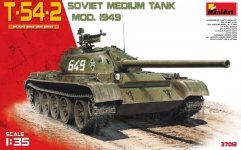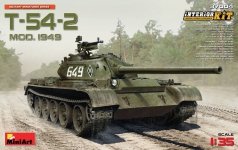MiniArt 37093 T-34/85 YUGOSLAV WARS 1/35
Plastikowy model czołgu do sklejania. Nie zawiera kleju ani farb.
T-34-85 – czołg średni konstrukcji radzieckiej z okresu II wojny światowej. W 1943 roku pojawił się problem niewystarczającego uzbrojenia głównego czołgu Armii Czerwonej – T-34. Niemcy wprowadzili w tym czasie do akcji nowe typy czołgów. Były to głównie wozy typu Panther i Tiger z nowymi armatami kal. 75 i 88 mm. Także popularny na froncie czołg Panzerkampfwagen IV, otrzymał nową długolufową armatę kal. 75 mm. Dowództwo radzieckie doszło do wniosku, że także T-34 należy wyposażyć w działo o większej sile ognia. Rozpatrywano przede wszystkim uzbrojenie czołgu w armatę o większym kalibrze. Rozpoczęto pracę nad uzbrojeniem wozu w działo o kalibrze 85 mm. Nad jego konstrukcją pracowało kilka zespołów konstruktorów.
Nowy czołg wszedł do produkcji seryjnej na początku 1944. Od swojego poprzednika różnił się głównie działem o większym kalibrze i nową trzyosobową wieżą. Pierwsze serie czołgów były uzbrojone w działo konstrukcji zespołu gen. F. Pietrowa (D-5T). Od marca 1944 rozpoczęto produkcję wozów uzbrojonych w działo ZiS-S-53 konstrukcji zespołu inż. S. Grabina. Produkcja szybko się rozwijała. Wkrótce prowadzona była w wielu zakładach. Nowy czołg wyparł z produkcji poprzednią wersję T-34. Wozy produkcji różnych fabryk różniły się szczegółami budowy (kształtem wieży, konstrukcją kół nośnych itp.).
W ZSRR produkcja czołgu T-34-85 trwała do 1950 roku. W tym czasie zbudowano 44 000 egzemplarzy. Po zakończeniu II wojny światowej produkcję tych wozów rozpoczęto także w Czechosłowacji (w latach 1951–1957 zbudowano 3000 sztuk) i Polsce (w latach 1951–1957 zbudowano 1400 sztuk).
Czołgi T-34-85 pozostające w radzieckiej rezerwie mobilizacyjnej były pod koniec lat 60. XX w. modernizowane. Powstał wtedy wariant T-34-85M. Zainstalowano w nich silniki wysokoprężne V-54 o mocy 520 KM oraz koła typu stosowanego w czołgach T-55. Ostatecznie z wyposażenia armii radzieckiej wycofano je na początku lat 90. XX w.
The T-34 is a Soviet medium tank introduced in 1940, famously deployed during World War II against Operation Barbarossa.
Its 76.2 mm (3 in) tank gun was more powerful than its contemporaries while its 60 degree sloped armour provided good protection against anti-tank weapons. The Christie suspension was inherited from the design of American J. Walter Christie's M1928 tank, versions of which were sold turret-less to the Red Army and documented as "farm tractors", after being rejected by the U.S. Army. The T-34 had a profound effect on the conflict on the Eastern Front in the Second World War, and had a lasting impact on tank design. After the Germans encountered the tank in 1941, German general Paul Ludwig Ewald von Kleist called it "the finest tank in the world" and Heinz Guderian affirmed the T-34's "vast superiority" over German tanks."As early as July 1941, OKW chief Alfred Jodl noted in his war diary the surprise at this new and thus unknown wunder-armament being unleashed against the German assault divisions. Although its armour and armament were surpassed later in the war, it has been described as the most influential tank design of the war.
The T-34 was the mainstay of Soviet armoured forces throughout the war. Its general specifications remained nearly unchanged until late 1944, when it received a firepower upgrade with the introduction of the greatly improved T-34/85 variant. Its production method was continuously refined and rationalized to meet the needs of the Eastern Front, making the T-34 quicker and cheaper to produce. The Soviets ultimately built over 80,000 T-34s of all variants, allowing steadily greater numbers to be fielded despite the loss of tens of thousands in combat against the German Wehrmacht. Replacing many light and medium tanks in Red Army service, it was the most-produced tank of the war, as well as the second most-produced tank of all time (after its successor, the T-54/T-55 series).With 44,900 lost during the war, it also suffered the most tank losses ever. Its development led directly to the T-44, then the T-54 and T-55 series of tanks, which in turn evolved into the later T-62, T-72, and T-90 that form the armoured core of many modern armies. T-34 variants were widely exported after World War II, and as recently as 2018 more than 130 were still in service.
BARDZO SZCZEGÓŁOWY ZESTAW MODELI PLASTIKOWYCH
POJEDYNCZE UTWORY W ZESTAWIE
CZĘŚCI FOTOTRAWIONE W ZESTAWIE
W ZESTAWIE PRZEZROCZYSTE CZĘŚCI PLASTIKOWE
WSZYSTKIE WŁAZY MOGĄ BYĆ MONTOWANE W POZYCJI OTWARTE LUB ZAMKNIĘTE
POWIERZCHNIE METALOWE I LINIE SPAWANIA DOKŁADNIE PRZEDSTAWIONE W MODELU
KARTA NAKLEJEK NA 5 OPCJI
















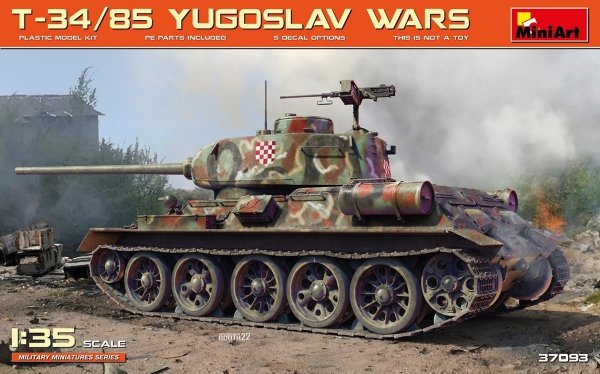
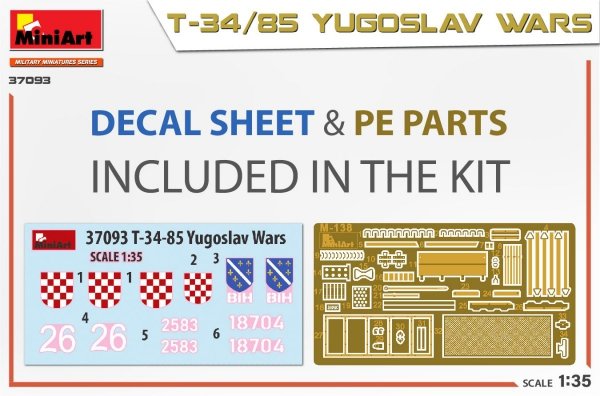
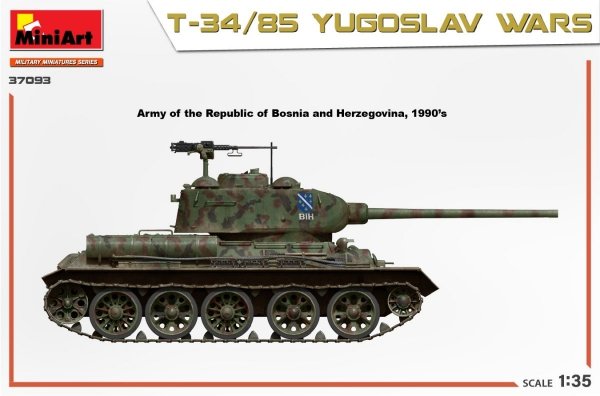
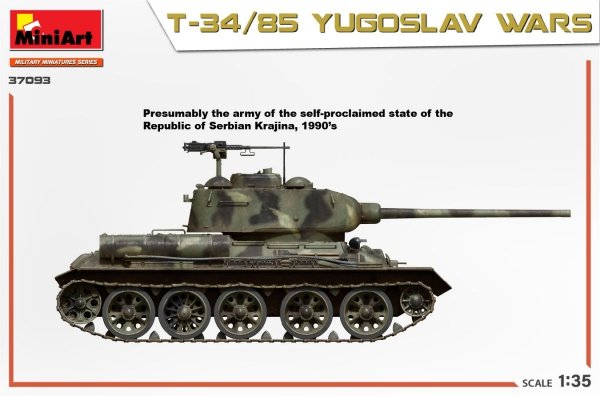
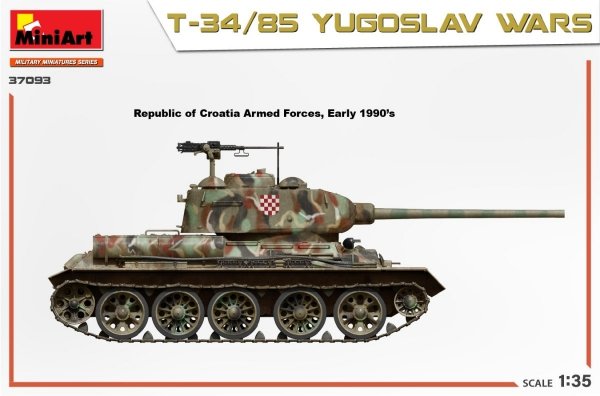

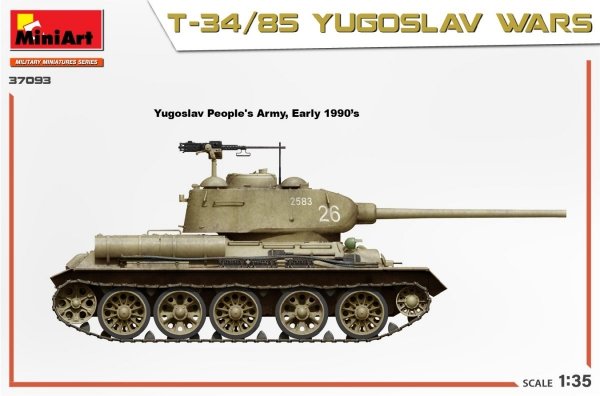
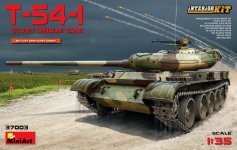
 1 szt.
1 szt.
 7 szt.
7 szt.